Outsourcing of Procurement Logistics at Schiesser AG
Schiesser AG, headquartered in Radolfzell, is Germany’s leading underwear specialist and on its way to becoming international market leader in the area of “close to skin” textiles. Schiesser outsourced the complete management of its procurement process from the purchase order through to delivery to the factory to the logistics provider Gebrüder Weiss. The introduction of an information logistics solution makes it possible to direct the information created (e.g. purchase order, transport status) to the respective recipient in the supply chain in real time. The outsourcing of logistics operations supports the shortening of process times and the reduction of process costs. The establishment of a supply chain cockpit in which all the relevant information comes together permits more efficient transport handling and reduces the workload involved for Schiesser.
Inhaltsverzeichnis
1. Company2. Starting Point
procurement process
3. Step 1: Reorganization of Procurement
procurement process
4. Project to Reorganize Transport Logistics
execution, critical success factors
5. Procurement After the Outsourcing of Procurement Logistics
procurement process, cost and benefit
6. Contextualization
1. Company
Overview. Schiesser AG, headquartered in Radolfzell, is Germany’s leading underwear specialist and on its way to becoming international market leader in the area of “close to skin” textiles. In addition to producing their own brand SCHIESSER, Schiesser AG will in future become increasingly active in the private label business.
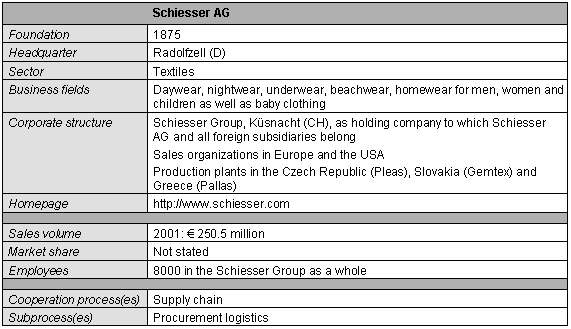
Figure 1-1: Brief Profile of Schiesser AG
Challenge in the textile industry. Short-lived fashion trends have a major influence on products in the textile industry. The customers of a brand manufacturer like Schiesser attach particular importance not only to product quality but also to on-time delivery in order to be able to service the demand of end consumers almost instantly. Time is therefore a crucial factor. For procurement, this means the punctual and cost-effective supply of the necessary raw materials to all production sites. Problem deliveries (e.g. late, incorrect amount and quality, etc.) can hold up production and prejudice Schiesser’s own on-time delivery.
Within the context of the procurement process suppliers are thus selected initially according to production size, delivery scope and quality. Schiesser buys raw materials and textile accessories from the whole of Europe. However, the majority of suppliers are located in Southern Germany. Transporting the goods to the production sites in the Czech Republic, Slovakia and Bulgaria including customs clearance is a major part of the procurement process.
2. Starting Point
Strategy. Schiesser planned production and procurement centrally. Raw materials were purchased from a large number of suppliers (number in the year 2000: approx. 600), of which only a percentage were active.
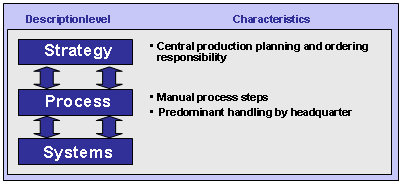
Figure 2-1: Main Features of the Original Procurement Process
Process. In some cases, the suppliers delivered free domicile to the production plants direct (1st process variant “direct delivery”). Roughly 70% of the goods were first received by the procurement center in Radolfszell (2nd process variant “procurement center”). Here, Schiesser allocated the deliveries to the various production plants and sent them regrouped to the individual plants using different forwarders. The headquarter first paid the supplier invoices and then charged them to the subsidiaries. Figure 2-2 depicts the process variant “procurement center”.
Systems. No special system support existed for the procurement process. Although the individual Schiesser subsidiaries had SAP R/3 systems, these were not interconnected. The parties concerned therefore used telephone and fax as their main means of communication.
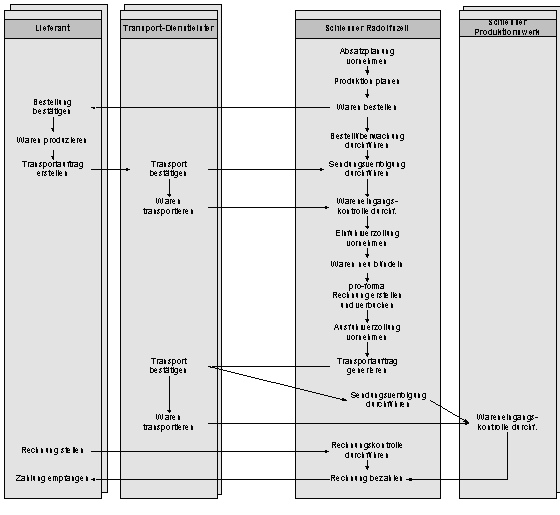
Figure 2-3: Previous Procurement Process at Schiesser Before Optimization (Process Variant “Procurement Center”)
Problem Perception. The procurement process was time-consuming and expensive:
- As the goods were delivered free domicile to Radolfszell or direct to the plants, the suppliers used a large number of different transport logistics providers. Planning and scheduling was the responsibility of Schiesser. This included amongst others ongoing checks to see whether the deliveries could be at the plant by the required date. The transport costs were higher than they would have been if the company had concentrated on a smaller number of carriers with large transport volumes because it was not possible to realize any economies of scale.
- Schiesser handled the customs clearance of the purchased goods. Those which were delivered to the procurement center in Radolfszell sometimes had to undergo several customs clearance operations before being sent to non-EU production plants. This also included issuing pro forma invoices.
- The level of on-time deliveries did not meet requirements. Large safety stocks in the plants were the consequence
- Goods and invoice checking was split between different companies. This caused settlinig of discrepancies which was often very time-consuming.
3. Step 1: Reorganization of Procurement
Strategy. As part of the reorganization of procurement, responsibility for ordering was initially transferred to the production plants. The sales plans continued to be drawn up centrally. Central Procurement negotiated outline agreements with suppliers. This meant that volumes could be aggregated for the price negotiations.

Figure 3-1: Main Features of the Procurement Process after the Reorganization of Procurement
Process. Supposed as shown in figure 3-2 the production plants placed their own orders with suppliers. They received the goods by direct delivery, were sent the invoice and performed the customs clearance. This meant that the goods and the invoice could now be checked on the spot. The plants were responsible for tracking deliveries themselves.
Schiesser expected their suppliers to issue the export documents. This involved either a “EUR-1 preference certificate” or an export declaration. Depending on the type of document, these tasks take between 10 and 30 minutes.
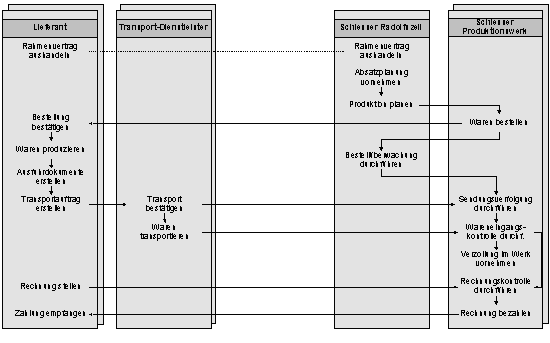
Figure 3-3: Procurement Process at Schiesser after Optimization
Systems. Initially there was no dedicated technical system support.
Problem Perception. In spite of the benefits described, the transport logistics of the new procurement process in particular was inefficient:
- As each plant ordered their own materials which were delivered direct, the previous transport units (full truckload deliveries) were split into a large number of (costlier) small transport jobs.
- As there was no longer any central grouping of deliveries to the production plants, at peak times there were now 10 - 20 vehicles to deal with every day at the unloading ramp in place of the 2 - 3 large deliveries per week.
- The expansion of decentralized competencies actually led to an increase in the number of forwarder relationships and thus to a high workload where invoicing was concerned.
- As the planning and scheduling activities were still in Schiesser’s hands, it was not possible to achieve a significant reduction in the coordination activities of Central Procurement compared to the old process. “Ping-pong effects“ resulted between Central Procurement and the production plants due to overlapping tasks and competencies, particularly in the case of order monitoring and delivery tracking. The lack of technical system support continued to lead to a situation where in many cases the forwarder selected by the supplier for a concrete delivery could only be ascertained by phoning the supplier and/or the forwarder normally used.
- The lack of transparency in the supply chain meant that Schiesser were not able to state the number of problem deliveries and the reasons, and significantly improve on-time delivery.
The end result was that improvements in procurement logistics fell significantly short of what was possible.
4. Project to Reorganize Transport Logistics
Goals. In view of the transport inefficiencies, Schiesser decided to combine the demonstrated advantages of the new procurement process with those of a centrally coordinated transport process. The goals of the optimization project were:
- The punctual supply of purchased goods to the production plants,
- The reduction in personnel costs by outsourcing activities from the areas of transport and customs,
- The creation of a single point of contact for everyone involved in the supply chain,
- The consolidated pick-up of goods from the supplier and consolidated delivery of the purchased material to the production sites in order to reduce transport costs, customs documents and truck frequency at goods inward (by means of transshipment),
- A saving in transport costs through consolidated transport and a change in freight prepayment (new ex works – except yarn) plus saving in the incidental charges which previously had to be paid to the transport service provider,
- Simplified billing of transport costs.
To achieve these goals Schiesser decided to outsource the complete management of the procurement process from order placement through to delivery to the plant. The decision-makers chose the logistics provider Gebrüder Weiss for this purpose, primarily due to their strength in business with Eastern Europe. In addition, Schiesser wanted to increase the transparency of the supply chain with the aid of a software solution.
Execution. The “ Transport Logistics Optimization“ project was launched in August 2001. Schiesser entrusted the external experts Gebrüder Weiss, who possessed the necessary logistics know-how, with the actual project management. They were in a position to judge the structures in place at Schiesser objectively and to show the sense and necessity of process changes.
At Schiesser, the project team included Norbert Adrian, Managing Director Procurement at Schiesser AG, an assistant and the head of Customs/Transport. Experts from Gebrüder Weiss and the software supplier inet-logistics also collaborated in the project. For the Schiesser staff, the project workload was part of normal daily business and was not recorded separately.
Process adjustments were undertaken successively during the course of the project. The chosen software solution from the Application Service Provider (ASP) inet-logistics went into operation on a trial basis in June 2002 with two pilot suppliers. The next stage will be to include the 30 strategically most important suppliers out of a total of 68 currently active suppliers.
Critical Success Factors. Adrian states the main success factor as being prompt communication to those affected and their involvement in the project work. This increases motivation and identification with the project. In his view, it is thanks to this circumstance that implementation was completed faster than planned. In this context he considers it to be essential to remove project collaborators from the time-keeping system and to reward them for project success with previously defined incentives (e.g. financial bonus, special leave).
The aim of involving all employees proves difficult when there is a need to cut back on the number of employees, as in this case. The way in which this is communicated to the workforce is important for the working atmosphere and employee motivation. Adrian recommends that communication should start when around 80% of the project has been completed. At the same time, activities were outsourced to other processes at an early stage in this particular case.
Precisely because of the additional workload for project collaborators, Adrian takes the view that a period of roughly one year should not be exceeded. In the interests of realistic time planning it is important not to underestimate the complexity of the project and to take the interfaces with other processes into account. Interfaces can lead to a blockade by other departments if the managers concerned are involved in the project too late in the day, if at all.
Anton Hagg, a senior manager at Gebrüder Weiss and responsible for implementation of the collaborative procurement process in this case, also points out the importance of trust-building measures when initiating cooperations of this kind. The people affected in the cooperation partners’ organizations must be identified in good time and involved in cooperation once the decision has been made by the managers concerned.
5. Procurement After the Outsourcing of Procurement Logistics
Strategy. Schiesser has transferred the subprocess procurement logistics to the globally active Austrian logistics company “Gebrüder Weiss”. As a “third party” logistics provider [see e.g. Skojett-Larsen 2000, Bolumole 2001], Gebrüder Weiss not only take care of operational management of the supply chain but also the grouping together (transshipment) of deliveries and customs clearance of the goods. Gebrüder Weiss, who previously only acted as transport provider for Schiesser sporadically, also assume responsibility for the entire transport of goods together with their partners.
Central sales and production planning remains in place, as does the responsibility of the production plants for order placement.

Figure 5-1: Main Features
Process. One Gebrüder Weiss employee controls and monitors the Schiesser AG purchase and transport orders, and acts as the contact point (“supply chain captain”) for all the parties involved. By linking the requirement dates of the plants, the transport and transshipment times, it is possible to calculate the pick-up time at the supplier’s exactly and thus to increase the punctuality of deliveries. The process transparency means it is possible to react quickly to any problems in the logistics chain. A process overview is given in figure 5-2.
Orders are sent to Schiesser’s suppliers electronically via a common collaboration platform which is made available by the application service provider inet-logistics. In addition, the suppliers are proactively advised by e-Mail that they have received new orders. The supplier’s disposition is now to either accept or refuse the order, and effect part shipment or defer delivery dates within a defined framework.
Once the ordered goods are ready for delivery Gebrüder Weiss transport them to their central transshipment point in Memmingen where they are sorted according to production plants and regrouped for each production plant. The subsequent shipments are brought to the respective production plants several times a week on fixed delivery dates and customs clearance is performed there by the logistics provider. The main activities in the procurement process are now computer-assisted or completely automated. At the same time the parties involved can receive updated status information at any time.
The occurrence of predefined events (e.g. no order confirmation within 48 hours) proactively triggers an escalation mechanism by notifying the supply chain captain at Gebrüder Weiss. He will then try to secure on-time delivery of the goods within the scope of his planning and scheduling leeway. Schiesser only have to become active in response to in formation from the system if it is no longer possible for the goods to be at the plant by the required date.
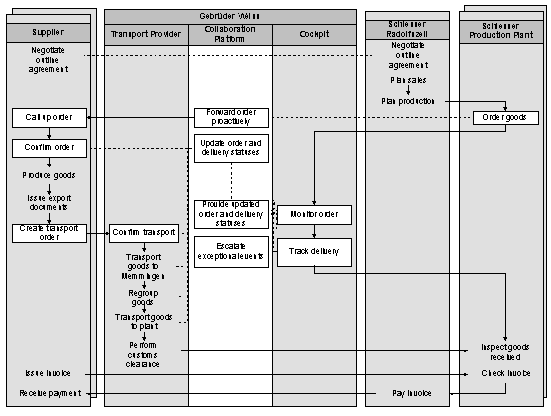
Figure 5-3: New Procurement Process at Schiesser After Reorganization of Transport Logistics
Systems. Supply chain management is taken care of by the information logistics solution provided by inet-logistics. Here, Inet-logistics acts as application service provider. According to Adrian, the fact that inet-logistics is a subsidiary of Gebrüder Weiss only played a secondary role in the choice of software solution. The alternative solution evaluated, KNlog from the international logistics company Kühne&Nagel [www.kn-portal.com], proved to be too complex and cost-intensive for a medium-sized company like Schiesser. The points in favor of the inet-logistics service on the other hand were an economic cost structure, one-off project costs for setting up the interface to the electronic communication platform, which are charged to the logistics provider, and the availability of the service for all the parties concerned via the internet.
The purchase orders from Schiesser are transferred directly from their SAP systems to an electronic platform (“logistics server®”). The SAP Business Connector is used to convert the purchase orders (iDOC’s) from SAP R/3 into XML (Extended Markup Language) and send them via the internet. Suppliers have web-based access to the orders which are stored there for them. They are automatically advised by e-Mail that orders have arrived. Once the supplier has processed the order, they can generate the respective transport orders. Additional functions allow the selection of transport providers and the printout of their specific labels including routing information.
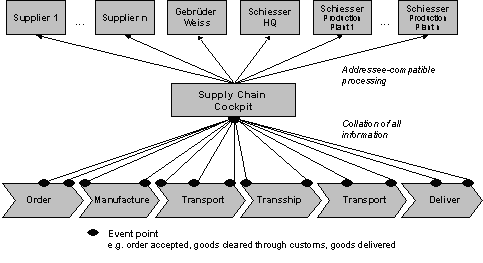
Figure 5-4: How the Supply-Chain-Cockpit Works
If the load is ready for shipment, setting the appropriate status automatically assigns the delivery to a loading list. When the loading list is finally authorized the transport order is transmitted to the transport provider electronically. The tracking and tracing information from the transport provider is also transferred to the logistics server®. This means that both the supply chain captain at Gebrüder Weiss and Schiesser themselves can call up all purchase and transport orders including their current status. The various formats used by the transport providers for tracking and tracing information are translated into a uniform format on the communication platform.
Costs and Benefits. As a result of optimizing transport logistics Schiesser reduce personnel costs by 85%. Customs clearance and order monitoring have been outsourced to the logistics provider Gebrüder Weiss. By consolidating transport orders and changing the freight prepayment transport costs can be cut by € 65,000 per annum. The information logistics solution from the application service provider inet-logistics increases the transparency of the supply chain for all the parties involved. Around 12,000 purchase orders and 3,800 transport jobs are handled annually with 100 suppliers.
Gebrüder Weiss GmbH can also reduce costs thanks to the electronically supported logistics process. The enhanced transparency in the logistics chain saves roughly € 50,000 a year in transport costs. The electronic issue of transport orders by the suppliers cuts process costs by another € 4,000 p.a. An overview of the expenditure and benefit potentials realized is given in figure 5-5.
Planned Further Developments. Due to the historically grown organization structure, Schiesser have first optimized procurement logistics as part of the procurement reorganization program. Schiesser therefore see another development step as being the transfer of this concept to distribution logistics. Here, Schiesser also consider expansion of the service range offered to customers. The integration of material numbers and purchase order numbers into the system, for example, could make it possible to customers to call up the status of an order from Schiesser at any time via the internet.
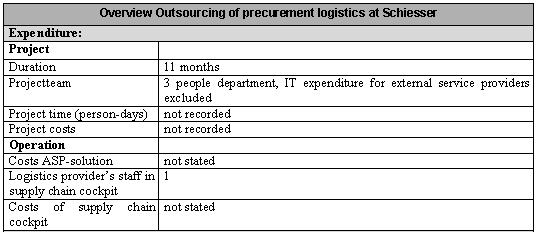
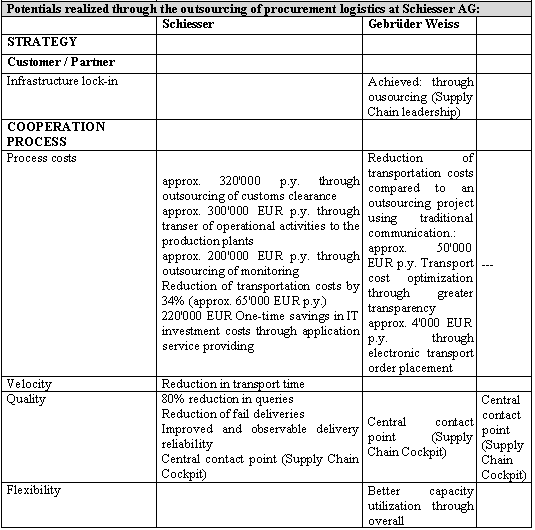
Figure 5-6: Outsourcing of Procurement Logistics at Schiesser - Expenditure and Benefits Achieved
6. Contextualization
By reorganizing their procurement logistics Schiesser have succeeded in increasing the speed and transparency of the supply chain. At the same time, the introduction of an information logistics solution makes it possible to direct the information created (e.g. purchase order, transport status) to the respective recipient in the supply chain in realtime. The outsourcing of logistics activities supports the shortening of process times and the reduction of process costs through central transshipment of the goods, allowing economies of scale to be utilized. The establishment of a supply chain cockpit in which all the relevant information comes together permits more efficient transport handling and reduces the workload involved for Schiesser.
The transparency achieved as a result also improves process quality by giving Schiesser the possibility to react quickly to any imminent delays in delivery. The data from the supply chain cockpit can be aggregated and filtered to suit the addressee so that Schiesser perform a targeted search for critical purchase orders and transport jobs, for example.
The Schiesser case is furthermore characterized by the following special features:
- The number of units of responsibility in the process has increased. As a result of outsourcing the logistics process, the supply chain cockpit at Gebrüder Weiss becomes a new unit of responsibility. While it appears at first sight that this raises the number of interfaces in the process, it does in fact lead to more efficient processes overall because Schiesser can concentrate on their core competencies.
- The number of companies acting as units of responsibility has been drastically reduced. The simultaneous decrease in the number of suppliers and transport providers reduces the coordination effort required. Among the remaining organizations activities can be more closely meshed and collaborative processes defined (e.g. procurement logistics jointly with Gebrüder Weiss, suppliers upgraded to system suppliers).
- The outsourcing of procurement logistics was driven by the reorganization of procurement. Distribution logistics has not yet been reorganized but potentials are seen in this area.
Bibliography
[Bolumole 2001]
Bolumole, Y., The Supply Chain Role of Third-Party Logistics Providers, International Journal of Logistics Management, 12th Year, 2001, No. 2, pp. 87-102
[Skojett-Larsen 2000]
Skojett-Larsen, T., Third party logistics – from an interorganizational point of view, International Journal of Physical Distribution & Logistics, 30th Year, 2000, No. 2, pp. 112 ff.





